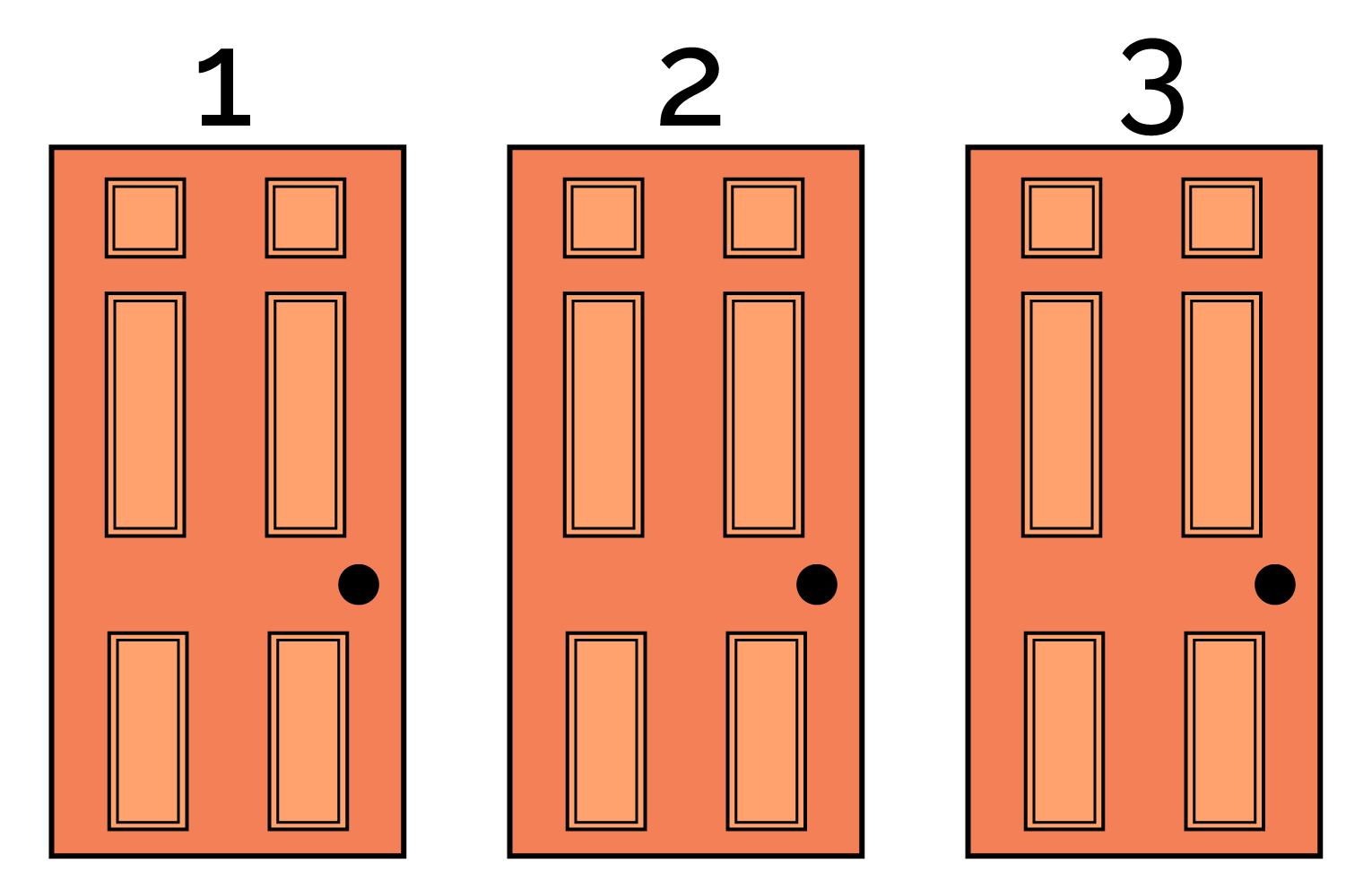The Monty Hall Problem
The Monty Hall Problem is based off the popular TV game show Let's Make a Deal that first aired in 1963 and was hosted by Monty Hall for near 30 years. The premise of the show was that there were three doors for you to choose between: two contained nothing of value to you (a goat in the game show!) and the third door contained $1,000,000. As a host, Monty Hall led you, the game show player, through three stages:
- You pick one of three closed doors, making your guess as which door contained $1,000,000,

Monty Hall would then reveal a door you did not choose that did not contain the $1,000,000 prize,
With two doors still closed (including the one your originally picked), you are given the choice: do you want to swap doors, or stay with the one you picked?

Your Decision: Should you stay or switch?
This problem has puzzled people for years! Some people say you should go with your gut and keep your original door. Others say you should switch and some believe it actually doesn't matter. We can use probability to figure out which outcome gives you the highest probability of winning $1,000,000.
Choice: When we STAY with our original door
Let's think about the beginning question- when you first pick your door, the probability of picking the winning door is 1/3.

Then, Monty Hall opens a losing door! He does this knowing which doors are winning and losing. Let's think about the sample space (in other words, all possible outcomes) when you decide to STAY with your original door.

In other words, if you pick Door 1 and don't change your door when Door 1 is winning -- you win! If you pick Door 1 and don't change your door and Door 2 is winning -- you lose! You can see all possibilities in this table. So overall, you will win 3/9 or 1/3 times in this scenario.
Choice: When we SWITCH our original door
Let's do the same thing, assuming that you SWITCH! Let's think about the sample space (in other words, all possible outcomes) when you decide to SWITCH your original door.

In other words, if you pick Door 1 originally and change your door when Door 1 is winning -- you lose! If you pick Door 1 and change your door and Door 2 is winning -- you win! You can see all possibilities in this table. So overall, you will win 6/9 or 2/3 times in this scenario.
Analysis
Given the probability of winning when you STAY is 1/3 and the probability of winning when you SWITCH is 2/3, we see that:
This can be slightly confusing! But the math using probability and listing out the possible outcomes of both scenarios checks out! In DISCOVERY, you will also learn how to simulate the Monty Hall Problem in Python! You can simulate playing this game hundreds or even thousands of times to prove that switching does increase your chance of winning.
One way to think about this is that at the beginning, you are more likely to pick the wrong door (you have a 2/3 chance of picking the wrong door). If you pick the wrong door, you should switch to win :)